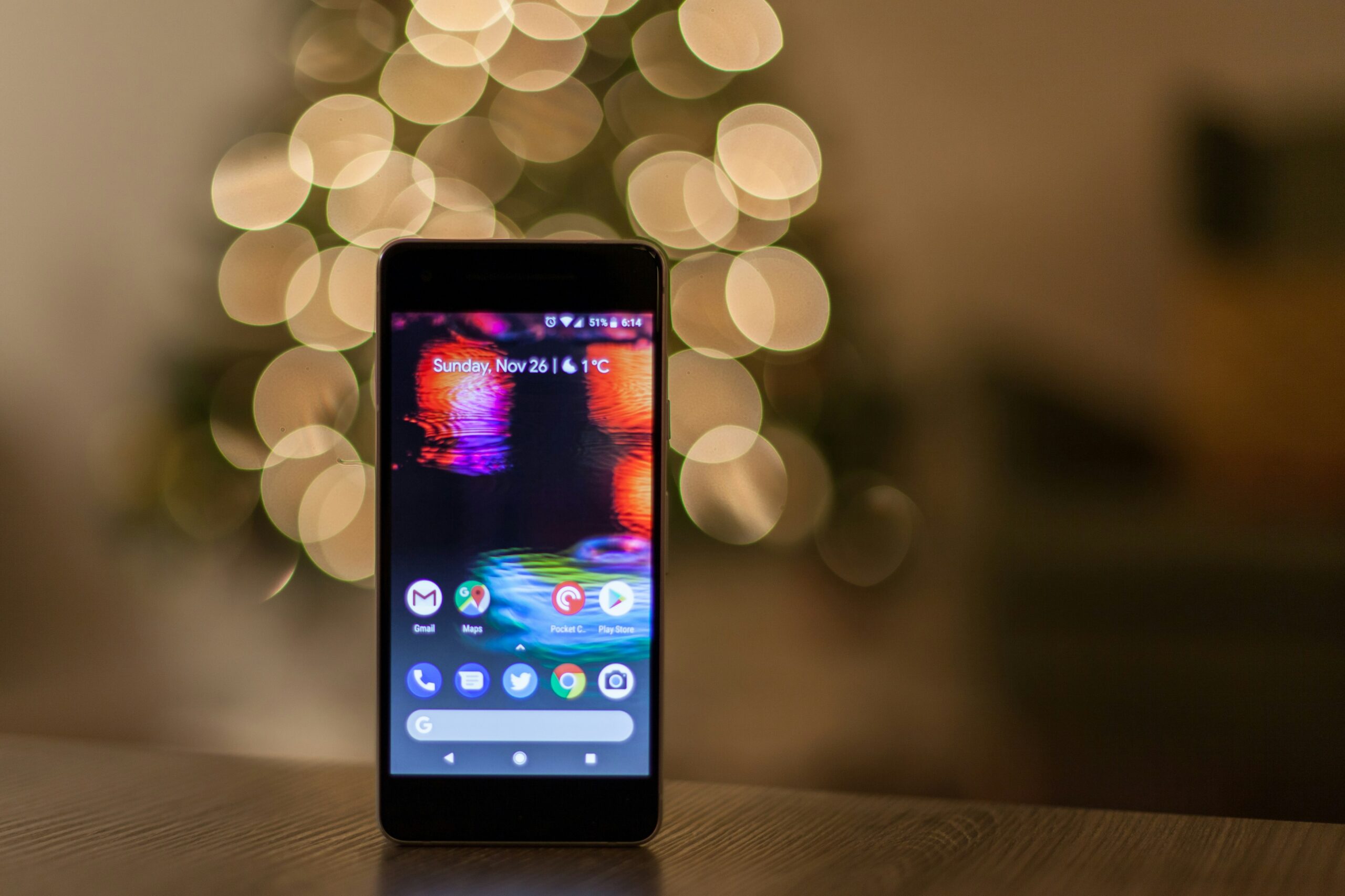Accessibility in technology is pivotal for ensuring that all individuals, particularly those with disabilities, have equal opportunities to interact with digital environments. As advancements in technology continue to shape our lives, it is imperative that these innovations are designed with inclusivity in mind. Accessibility refers to the practice of making applications and technologies usable for people with diverse abilities and disabilities, thereby removing barriers that may hinder their interaction with these platforms.
Individuals with disabilities often encounter significant challenges when using standard applications. These barriers can vary widely, from non-optimized interfaces that do not accommodate screen readers, to platforms lacking support for alternative input methods such as voice commands or switch devices. Such obstacles create an inequitable digital landscape, preventing disabled users from enjoying the same benefits and conveniences that technology offers to able-bodied individuals. This disadvantage can limit their independence, disrupt communication, and inhibit their ability to access vital information.
Accessible apps for disabled users play a crucial role in bridging this gap. They empower individuals by facilitating engagement with technology that is tailored to their specific needs. Features such as adjustable text sizes, color contrast options, and voice recognition can significantly enhance user experience, providing tools that enhance both functionality and usability. This creates a more inclusive digital environment and improves the overall quality of life for disabled individuals, enabling them to navigate their daily lives with greater ease.
Throughout this blog post, we will explore various aspects of accessible apps for disabled users. We will discuss common accessibility features, highlight exemplary applications in the market, and provide recommendations for developers aiming to create more inclusive technology solutions. Our goal is to raise awareness of the importance of accessibility and promote the development of user-friendly apps that can serve the needs of all individuals.
Types of Disabilities and Their Unique Needs
In today’s technology-driven world, accessible apps for disabled users play a crucial role in bridging the gap for individuals facing various challenges. Disabilities can be categorized into several types, each presenting unique needs when interacting with modern technology. Understanding these categories fosters improved design and functionality in app development.
Visual impairments, such as blindness or low vision, account for significant challenges in the digital landscape. Users may depend on screen readers to convert text to speech, as many apps traditionally lack features tailored to their needs. For example, apps that incorporate voice commands or haptic feedback can enhance the user experience by allowing individuals to navigate without relying solely on sight.
Hearing loss, whether partial or complete, introduces different difficulties for users. Many smartphone applications involve audio components, yet they may fail to provide adequate visual alternatives. Captions, transcripts, and visual cues are essential features that can transform the experience for users with hearing impairments. For instance, messaging apps that include sound notifications as well as visual alerts ensure inclusivity.
Individuals with motor disabilities often encounter difficulties with fine motor skills or muscle control, making traditional navigation and typing cumbersome or impossible. Accessible apps for disabled users can incorporate large touch targets, voice recognition, and customizable gestures that accommodate various abilities. A practical example can be found in gaming applications that allow adaptive control methods, enabling users to participate fully.
Cognitive disabilities can also affect a user’s interaction with technology. These disabilities might influence memory, problem-solving, or comprehension capacities, necessitating apps that are straightforward and easy to navigate. Utilizing simple language, consistent layouts, and supportive features, such as reminders and guided instructions, can significantly empower users facing these challenges.
Recognizing the unique needs of these diverse groups encourages the development of applications designed to enhance accessibility, ultimately improving the quality of life for disabled users. Tailoring accessible apps for disabled individuals reflects the growing commitment to inclusivity in our digital age.
Key Features of Accessible Apps
Accessible apps for disabled users are designed with specific features that enhance usability and improve the overall user experience. These applications aim to accommodate various disabilities, ensuring that all individuals can engage with technology seamlessly. Several critical features contribute to making apps more accessible for users with disabilities.
One significant feature is the integration of screen readers. These tools enable visually impaired users to receive audio feedback that describes the content displayed on the screen. Screen readers read aloud text, buttons, and other interactive elements, thus providing valuable assistance in navigating applications. By incorporating this feature, developers ensure that visually impaired individuals can enjoy the full functionality of the app.
Another essential feature is the implementation of voice commands. Voice recognition technology allows users to control applications through spoken instructions, making it particularly beneficial for individuals with motor impairments. By minimizing the need for manual interaction, voice commands create a hands-free experience, enhancing accessibility for users who may struggle with traditional input methods.
Additionally, closed captioning is an invaluable asset for users with hearing impairments. This feature ensures that audio content, including videos and podcasts, includes text summaries of spoken dialogue, thereby allowing users to follow along without relying solely on sound. Closed captioning not only meets accessibility standards but also enriches the content experience for everyone, including those with differing preferences for information consumption.
Other vital features include adjustable font sizes and high-contrast themes. By allowing users to customize text size, accessible apps can cater to individuals with varying degrees of visual impairments. High-contrast themes further aid users by enhancing text visibility against background colors, reducing eye strain and improving readability.
In conclusion, key features such as screen readers, voice commands, closed captioning, adjustable font sizes, and high-contrast themes play crucial roles in the development of accessible apps for disabled users. These functionalities not only improve usability but also empower individuals to utilize technology conveniently and confidently.
Top Accessible Apps for Visual Impairments
In today’s digital age, accessible apps for disabled individuals, particularly those with visual impairments, play a crucial role in enhancing independence and quality of life. Below is a curated list of some of the best accessible apps designed specifically for users with vision challenges, showcasing their functionality and unique features.
One of the standout applications is Be My Eyes. This innovative app connects visually impaired users with sighted volunteers via live video calls. When a user needs assistance, they can request help, and a volunteer will provide visual guidance in real-time. This app is invaluable for day-to-day tasks such as reading labels or navigating new environments.
Another excellent tool is Seeing AI, developed by Microsoft. This app harnesses artificial intelligence to narrate the world around the user. It can read text aloud, identify products through barcodes, and even recognize currency, making it an all-in-one solution for various scenarios. Its feature of recognizing people by facial attributes is particularly beneficial for enhancing social interactions.
VoiceOver is an integral part of Apple devices, functioning as an adaptive screen reader. This built-in feature allows users to interact seamlessly with their device through gesture controls and voice commands, ensuring they can access applications, messages, and more without needing visual inputs. This exemplifies how built-in technology can empower users through accessibility.
Lastly, TalkBack serves a similar function for Android users. This screen reader provides spoken feedback and touch exploration capabilities, enabling users to navigate their smartphones with ease. With customizable settings, TalkBack supports a personalized user experience tailored to individual preferences.
These accessible apps for disabled individuals demonstrate the importance of technology in fostering independence. As development continues, users can look forward to even more innovative solutions that cater to their unique needs.
Best Apps for Hearing Impairments
For individuals with hearing impairments, technology offers numerous solutions designed to enhance communication and daily life experiences. Accessible apps for disabled users have been developed to provide support through various features tailored to improving interaction and accessibility. Here, we explore some of the best apps that cater specifically to users with hearing loss.
One standout application is **Ava**, which provides real-time transcription services. Using advanced speech recognition technology, Ava captures spoken words and converts them into text, making conversations more inclusive for those who are hard of hearing. This app is particularly beneficial in group settings, enabling users to follow dialogues seamlessly by displaying live captions on their devices. Its user-friendly interface allows for easy navigation and engagement, whether in a meeting or a social gathering.
Another useful resource is **Google Live Transcribe**. This app turns speech into text instantaneously, making it suitable for spontaneous conversations. Equipped with advanced machine learning capabilities, it can differentiate between speakers, enhancing clarity. Additionally, it enables users to adjust font sizes for better visibility, thus improving the overall accessibility experience.
For those who require a visual aid, **Ava Lipreading** is an innovative app that helps users enhance their lip-reading skills. By utilizing video feeds, this application allows for practice in various speaking scenarios, assisting users in interpreting social interactions, which can be particularly valuable in one-on-one conversations.
Furthermore, **Iris** is an alert system designed to assist users by converting typical sounds—like doorbells, alarms, and smoke detectors—into visual or vibrating notifications. This feature ensures that users remain aware of their surroundings, significantly improving safety and fostering independence.
These accessible apps for disabled individuals play a crucial role in bridging communication gaps for those with hearing impairments. Their diverse functionalities cater to a range of needs, ultimately enriching the daily lives of users and enhancing interactions within various environments.
Innovative Applications for Motor Disabilities
Motor disabilities can significantly impact an individual’s ability to perform everyday tasks, making the availability of accessible apps for disabled persons particularly crucial. Innovative applications designed for users with motor disabilities leverage adaptive technology and voice control to enhance accessibility and functionality. These tools enable individuals to communicate, manage daily activities, and navigate their environments with greater ease.
One significant advancement is the use of voice recognition software, which allows users to operate their devices hands-free. Programs such as Dragon NaturallySpeaking and Google Assistant enable people with limited mobility to send messages, make calls, or control smart home devices through simple voice commands. This technology not only facilitates communication but can also streamline task management, helping users maintain independence in their daily lives.
Another area of innovation lies in adaptive touch technology. For individuals who may have difficulty using standard touchscreens, applications that support external adaptive devices can make a substantial difference. For example, apps like TouchFree and EnableTalk are equipped to work with adaptive switches and eye-tracking technology, allowing users to interact with their devices without necessitating fine motor control. These tools demonstrate how accessible apps for disabled individuals can be customized to meet varied user needs.
Furthermore, there are several standout tools that have emerged in this field. Apps such as JotNot Pro offer comprehensive filing systems for organizing documents effortlessly through voice commands. Similarly, Todoist provides task management features that simplify scheduling, enabling users to dictate tasks directly, thereby improving productivity. These innovative solutions exemplify how the intersection of technology and accessibility can empower those with motor disabilities.
As the development of accessible apps for disabled users continues to evolve, these technologies will likely expand, further alleviating the challenges faced by individuals with motor disabilities and enhancing their quality of life.
Cognitive Accessibility: Apps for Cognitive Disabilities
Cognitive disabilities can affect a person’s ability to process information, remember tasks, and maintain organization. These challenges can significantly impact daily life; however, the emergence of accessible apps for disabled individuals has created innovative solutions to enhance cognitive functioning. By utilizing technology, these applications aim to simplify tasks, provide assistance in daily routines, and foster independence.
One of the most impactful categories of these applications focuses on task management and reminders. Apps like Todoist and Google Keep enable users to create to-do lists and set reminders for important tasks. These features help individuals with cognitive challenges by breaking down larger tasks into manageable steps and providing timely prompts, thus reducing frustration and confusion in day-to-day activities.
In addition to task management, gamification has emerged as a powerful tool in enhancing learning and daily functioning for those with cognitive disabilities. Educational apps such as Lumosity and Elevate use game-like interfaces to engage users in cognitive exercises, helping to improve memory, attention, and problem-solving skills. This approach not only makes learning enjoyable but also fosters a supportive environment for skill development.
Moreover, applications designed for social interaction and communication are invaluable for users who may struggle with social cues or organization. Platforms like Rememory provide personalized prompts that guide users in conversations and social situations, allowing for more fulfilling interactions. By integrating these specialized tools, individuals can practice and sharpen their social skills in a low-pressure context.
The impact of accessible apps for disabled users is profound, as they empower individuals to navigate their world more effectively. These applications not only support cognitive functioning but also champion independence, enabling users to participate more fully in their communities. By embracing technology that focuses on cognitive accessibility, we can foster an inclusive environment that uplifts everyone.
The Importance of User Feedback in App Development
User feedback plays a crucial role in the development of accessible apps for disabled individuals. By incorporating insights directly from the users who experience disabilities, developers can enhance their understanding of unique challenges faced in daily interactions. This engagement enables app creators to refine features, ensuring that applications are not only functionally effective but also user-friendly and truly accessible to their target audience.
The process of gathering and integrating user feedback fosters collaboration between developers and disabled individuals, leading to better design choices. For instance, a notable case studying the app “Be My Eyes” highlights the value of user feedback in shaping the app’s features. Initially developed as a visual assistance tool for blind users, the app evolved significantly through direct input from its user community. Feedback led to important updates, including features that allow users to customize their connection preferences, which greatly improved the usability and accessibility of the app.
Another compelling example can be found in the development of “Chirp,” an app designed to aid individuals with hearing impairments. Developers reached out to potential users to discuss their experiences with existing apps. They discovered that many users felt overwhelmed by excessive notifications and cluttered interfaces. In response to this feedback, the developers simplified the design and implemented customizable notification settings, making the app more manageable and tailored to the needs of its users.
These case studies illustrate how user feedback not only leads to meaningful improvements in accessible apps for disabled users but also fosters a sense of ownership among the users themselves. When disabled individuals actively participate in the development process, the resulting applications stand a greater chance of meeting their needs effectively. Engaging with users creates a beneficial loop where feedback continues to inform future improvements, ensuring that the development of accessible apps remains a responsive and dynamic process.
Future Trends in Accessible App Development
The development of accessible apps for disabled users is on the brink of a significant evolution, fueled by advancements in technology. As industries increasingly recognize the need for inclusivity, the integration of artificial intelligence (AI) and machine learning stands out as a transformative trend. These technologies offer unprecedented capabilities to tailor experiences for individuals with diverse needs, making applications not only more accessible but also more user-friendly.
AI can enhance accessibility by providing real-time assistance for users with visual impairments through voice recognition or image identification, thus empowering them to navigate digital environments more freely. For instance, applications can now leverage machine learning algorithms to analyze user behavior and preferences, facilitating a more personalized interaction that adapts over time. This adaptability ensures that users with disabilities find accessible apps that align with their specific requirements and unique experiences.
Moreover, the potential for innovations to promote independence through accessible apps for disabled individuals is vast. Features like gesture recognition and haptic feedback could allow users to interact with apps in more natural, intuitive ways. This could be a game-changer for individuals with mobility limitations who might struggle with traditional touch interfaces. Additionally, virtual and augmented reality are emerging as vital tools for creating immersive environments that can assist those with disabilities in learning and everyday tasks.
As awareness regarding the importance of accessibility continues to spread, advocacy will play a crucial role in shaping the development of these technologies. Developers are increasingly encouraged to prioritize inclusivity in their design processes, ensuring that accessibility is not merely an afterthought but a fundamental aspect of app functionality. By fostering collaboration among developers, advocacy groups, and users, the future landscape of accessible apps promises to be markedly enriched, enhancing the lives of disabled individuals everywhere.



